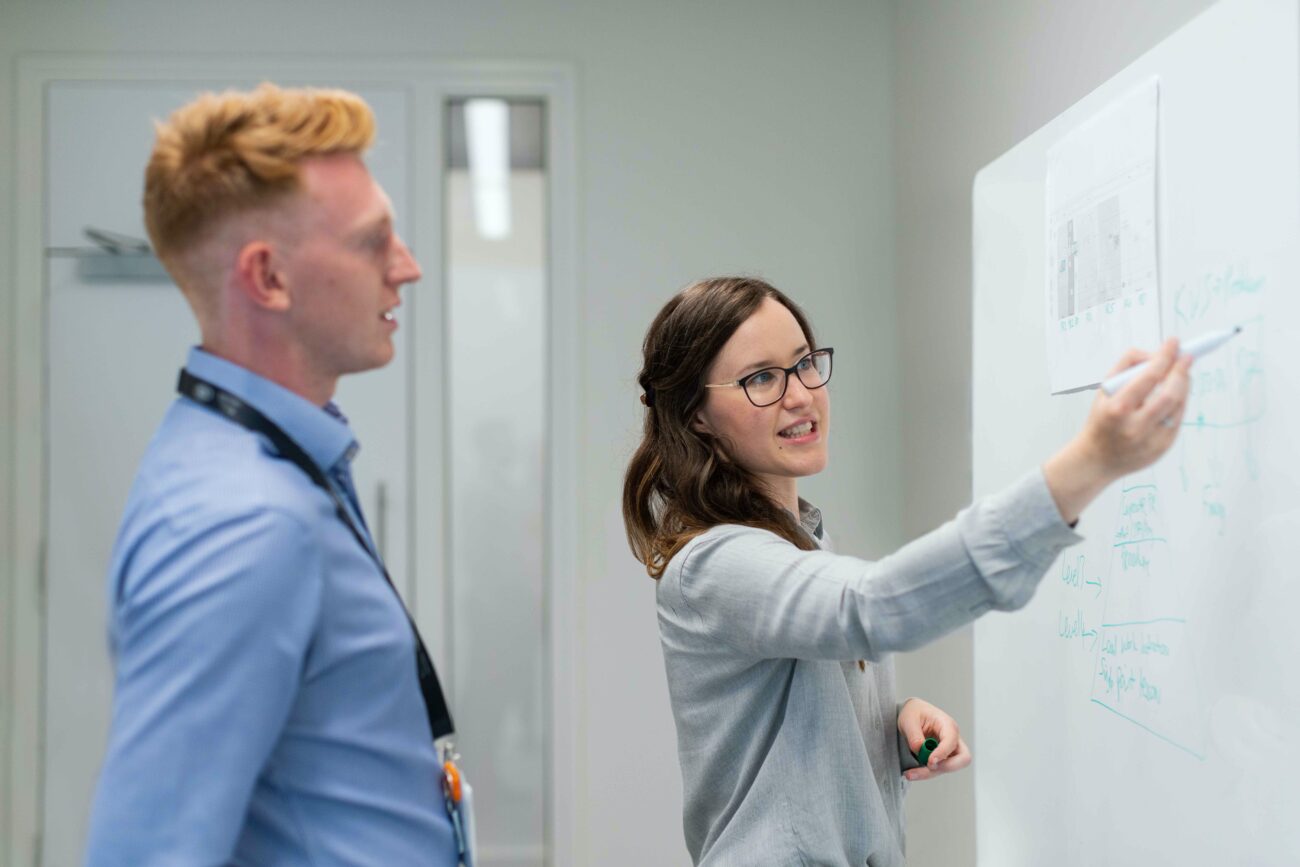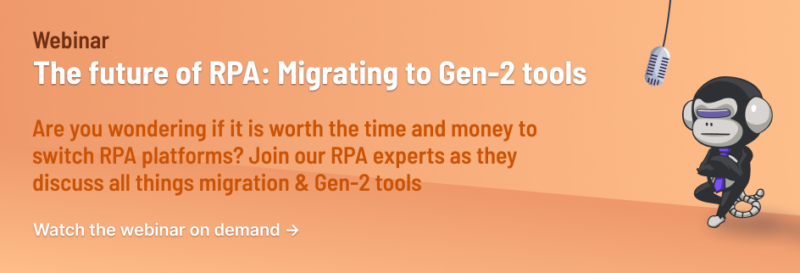Robocorp’s take on second generation (Gen2) RPA
Through the first generation of tools, RPA has been on the rise. But what's possible with the Gen2 tools?

When companies cannot find a proper marketing statement, they have a tendency to claim to offer “the next generation tools.” It is often an empty promise, and they cannot really articulate what the next generation offers and how it provides value to its users. When we talk about second generation Robotic Process Automation (RPA) tools, we want to be very clear what it really means.

While RPA has been on a rapid rise over the past several years, there have been disappointments in the market too. At Robocorp, we consider the first generation of RPA tools (“Gen1 RPA” for short) to include any platform (old or new) that places boundaries on automation through any combination of:
- A proprietary toolset
- License-based and up-front pricing
- High infrastructure costs
- Antiquated development and deployment experiences
It is within the framework of these Gen1 providers that we have seen the following problems:
- The robots are broken too often. The low-code/no-code development tools and “citizen-development” model often lead to very tailored bots that stop working when anything in the environment (e.g. software updates) change.
- Companies must make heavy front-end investments before the results can be seen. Many Gen1 RPA companies offer a business model where clients first buy software licenses and only then develop bots and see what they can really do and what business value they can achieve.
- The development tools are oriented around the user interface (UI). In-depth integrations with other systems is difficult, whether it’s through API’s, integration to data analytics tools, and building a seamless end-to-end process.
The problems above means it is sometimes hard to achieve real sustainable business value from Gen1 RPA tools. The total cost of ownership (TCO) is high, and the return on the investment (ROI) can take a long time to achieve. It is hard—often impossible—for small and medium size companies that have fewer resources to make the up-front investments. But they also mean problems for larger enterprises, who struggle to scale-up the use of robots both in terms of managing complexity and successfully deploying all their documented use cases.
That’s where Gen2 RPA comes in. Since our founding, Robocorp has focused on offering tools and solutions that can overcome the problems with Gen1, in-part by embracing the vision of Automation Ops. Our modern approach incorporates the proven development best practices of uniting business and technical users, and it appropriately delegates their roles in planning, building, and maintaining software robots. This enables large companies to build sustainable robots that can be scaled up across the organization, and also small and medium size companies to start to use automation with smaller investments.
The second generation RPA tools must fix the problems of the first generation in order to get companies to truly get value from automation and to see their ROI. Robocorp’s tools and business model offer a unique way to automate processes:
- Consumption-based pricing. Companies pay for automation tools when they actually use them, and when they can get value from them. No up-front licensing costs.
- Developer-focused experience. The development tools enable the use of programming languages (Python and Robot Framework) that make it possible to integrate automation to other systems beyond the UI. This means automation tools really help to build end-to-end processes and offer automation integrated to other software products.
- Developer tools with an open-source community. Professional software development tools make it possible to build more sustainable and stable robots that can better handle errors and special situations.
The combination of the above points means it is possible to identify and implement a valid business case to automate, and to see real for real value in return for the investment. The tools are well integrated to other components and they work like a stable software must work.
Additionally, consulting and RaaS (robot-as-a-service) companies can build successful businesses by using the tools and platform. This really expands the RPA market when these companies can rapidly build automation solutions for all kinds of needs, from small niche cases to larger common needs.
I have seen in many markets that the first generation tools open a new market, but their real value can remain limited. It is typical that they work especially for the early adopters, then the second generation can offer expanded and improved solutions with wider appeal. We are seeing the same thing happen in the RPA market.
I am proud that Robocorp is disrupting the RPA market with open-source developer tools and our cloud-native Control Room platform. Robocorp’s business model is based on real use and value for clients. Robocorp also empowers its partners (smaller and larger) to build successful businesses on its platform.
These factors in the second generation of RPA will make real change in the market and provide all kinds of companies with the opportunity to get value from automation.
Jouko Ahvenainen is a Co-founder and COO of Robocorp, a serial entrepreneur, and a tech and business pioneer.